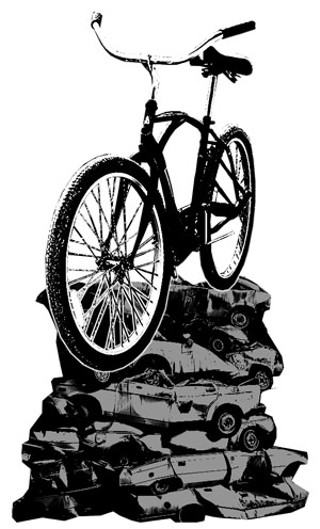Last week, HRM council decided to spend $1.4 million on security cameras on Metro Transit buses. This is our leadership's response to a recent spat of dirty (like the groping of a bus driver) and sometimes violent deeds committed on city buses, usually late at night.
There's a debate to be had about whether this expenditure will solve that problem. Regardless, finding money to address immediate security problems is always quicker and easier than investing in long-term solutions to our problems.
A forward-thinking city plans and builds equitable, affordable access to an array of sustainable, healthy options of where to live and how to get around. Neither poverty nor SUVs can be among those options. That's the kind of city possible only if we shake out of our quick-fix, short-term band-aid-on-a-gaping-wound culture.
Cycling provides a concrete example of the difference between the kind of city I'm talking about and the kind of city we actually live in. Cycling is healthy, sustainable and totally hot and, as an added bonus, it's almost impossible to grope a moving cyclist. Yet we now spend exactly $1.4 million more on bus cameras than we do on new cycling infrastructure. That's right, math wizards, cyclinggets nada.
That's because cycling is not a priority in this part of the world. Chris Milburn, a physician and the past-president of Velo Cape Breton, compares HRM's cycling investment of zilch to that of Amsterdam, which spends 30 percent of its budget on cycling infrastructure, has an obesity rate about half ours and uses a third less energy. "Obesity is a symptom," according to Milburn. The underlying disease is a suburbanized, motor-vehicle-obsessed landscape that "does not encourage physical activity." Especially if you can't afford a gym membership or a car to drive to the nearest bike trail.
"We have gone from three- or four-hundred-thousand dollars annually for cycling to zero," says Jared Kolb, co-chair of the year-old Halifax Cycling Coalition, an advocacy group for cyclists. "We need money re-allocated back to the Active Transportation Committee. It's needed for projects, education and advocacy." Even $400,000 on bikes would be a quarter of the cost ofbus cameras.
Still, Kolb says he is "cautiously optimistic" about the state of cycling in HRM. "When I first saw the new bike lanes on South Park I was like, 'Way to go, city!'" he says. He is also pleased that HRM has assigned a full-time transportation demand management co-ordinator, Hanita Koblents, to advocate for cyclists. "She's a cyclist, an advocate and has power."
In an October 18 visioning session for cyclists, Koblents gave the highlights of some of her recent accomplishments, including new or extended bike lanes in downtown Halifax, on Hammonds Plains Road, Main Street in Dartmouth and Purcell's Cove Road. "In all, 10.7 linear kilometres of bike lanes were added in 2008, for a total of more than 40 kilometres," she announced, adding that HRM is educating drivers about watching for cyclists and pedestrians with television commercials. There is also a new bylaw in place that requires new buildings to come equipped with bike parking on aper-square-foot basis.
Next year, peninsular riders may be treated to a new trail on the east side of Barrington from Upper Water Street that will connect onto the MacDonald Bridge bikeway. "I'm advocating for folding bikes to be allowed on buses," she added, "and all other bikes during off-peak hours." She is also pushing for bike racks on the front of all buses.
But throughout the five-hour session, Koblents emphasized that she is a realist---one step at a time--while the cyclists insisted on being visionary. In small groups and then by vote they determined their top six priorities for cycling: educating drivers and cyclists about the importance of cycling safety; advocating for cyclists' rights; connecting the myriad bike and transit routes scattered across our giant regional municipality; getting adequate bike parking and storage facilities plus planning roads and intersections with bikes in mind.
These are ambitious and holistic objectives for a volunteer organization to tackle, but they were the consensus of 40 eager cycling minds---minds that have moved away from short-form band-aid thinking. Sadly, big-picture thinking doesn't resonate in the catch-up world of City Hall.
"The bike plan of 2002 and the Active Transportation Plan of 2006 are not ambitious," Kolb says. You have a 20-year horizon to get to a place where many Canadian municipalities already are today. What the city and province need to understand is that cycling is good for the economy and health of the citizenry."












